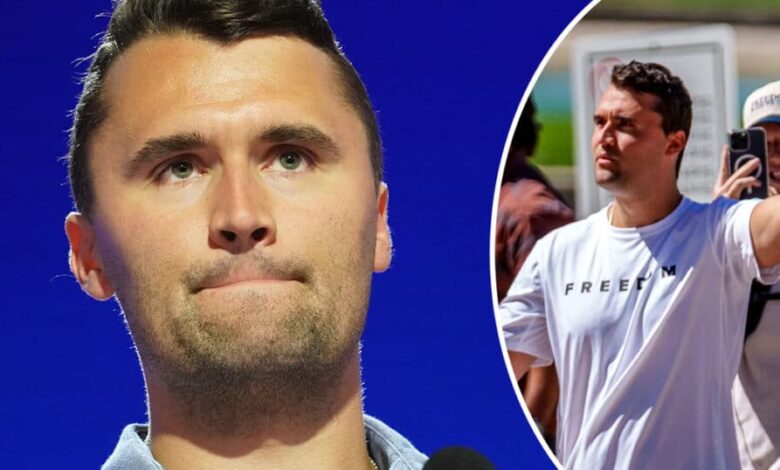
FBI confirms ‘breakthrough’ as manhunt for Charlie Kirk shooter continues
It was the kind of political rally many had become used to: earnest faces, cheering crowds, heated debate. Charlie Kirk was in the thick of it, hosting a “Prove Me Wrong” table at Utah Valley University, playing to his strengths as a polarizing and outspoken conservative activist. Then, in a moment that shocked millions, a single gunshot rang out. Charlie Kirk was hit in the neck by a bullet believed to have been fired from a rooftop nearly 200 feet away. He was rushed to a hospital but succumbed to his injuries roughly ninety minutes later.
From the first reports, it was clear this was no random act of violence. The FBI and Utah Public Safety Department called it a targeted attack, describing the scene as chilling and deliberate. On Thursday, a major press conference offered what authorities called a “breakthrough.” They revealed that the weapon believed to have been used in the attack—a high-powered bolt-action rifle—had been recovered in a nearby wooded area. Alongside the rifle, investigators also found a footprint, thought to belong to the shooter.
Even as those physical clues brought investigators closer, the suspect remained at large. The FBI said the individual is believed to be college-aged. Surveillance yielded images of a person of interest wearing a baseball cap and sunglasses, captured in a stairwell. Authorities urged anyone with video or photos from the event—or who recognizes the person in the released images—to come forward. A reward of up to $100,000 has been offered for tips that help lead to an arrest.
Shock, grief, and anger spread swiftly. Political leaders from both parties condemned the killing. Former President Donald Trump called Kirk “legendary,” praising his connection with conservative youth and ordering flags across the country to be flown at half-mast. California Governor Gavin Newsom, Democratic governors and lawmakers, and voices across the aisle joined in expressing sorrow. Even those often in direct opposition to Kirk in political debate stressed that this kind of political violence is unacceptable. Many said that while they disagreed with his views, no debate justifies murder.
In Congress, the reactions were raw. During a moment of silence in the House of Representatives, some members broke down, others shouted calls for prayer. Representative Lauren Boebert, Republican, called out during the quiet: “Silent prayers get silent results,” prompting tense back-and-forth among lawmakers. House Speaker Mike Johnson urged calm and unity, calling for an end to extremist rhetoric and warning that the country cannot tolerate further escalation.
Media responses followed in kind—some offering balanced condemnation, others framing Kirk’s death as the result of broader societal failures. Conservative media commentators described the killing as a martyrdom, saying Kirk’s legacy would only grow stronger. On the left, political figures and analysts raised questions about how rhetoric, polarization, and online echo chambers might contribute to an atmosphere where violence becomes less shocking.
What makes this especially jarring is the convergence of many unsettling trends over the past few years: public distrust, social media amplifying hatred, political polarization spiraling outward, and the weaponization of speech. For many observers, Kirk’s assassination feels like a wake-up call. If a public figure known for his controversial statements, used to debate and confrontation, could be killed in such a manner, what does that mean for the safety of speakers, organizers, and the communities where public dialogue traditionally takes place?
Universities, which have long struggled to balance free speech with security, are especially focused now. Events with large crowds, high-profile speakers, and contentious political issues may face renewed pressure to enhance security measures: better surveillance, stricter screening of attendees, increased law enforcement presence. But that raises its own tensions—between maintaining an open environment for debate and ensuring that such spaces do not become platforms for violence.
For Charlie Kirk’s family—his wife Erika and their two young children—this is a personal tragedy beyond politics. They were present at the event, saved from physical harm but not from the emotional devastation. Friends who saw how he balanced his public passion with his devotion to home and family say the legacy Kirk leaves behind will be measured not only in speeches and policy but in those private moments: fatherhood, marriage, faith.
As investigators piece together the who, the why, and the how, the nation watches. The images released of the person of interest, the recovery of the rifle, the hundreds of tips to the FBI—these are puzzle pieces. But the picture they form will ultimately say much more about where America stands on political violence, where it is headed, and how safe we feel when we speak our truths.
In the end, Charlie Kirk’s death has already become more than just a headline. It has become a question: can civil society, in a moment like this, hold onto its values—of free speech, of debate, of mutual respect—while protecting its people? In the dark hours after his loss, that question feels more urgent than ever.




